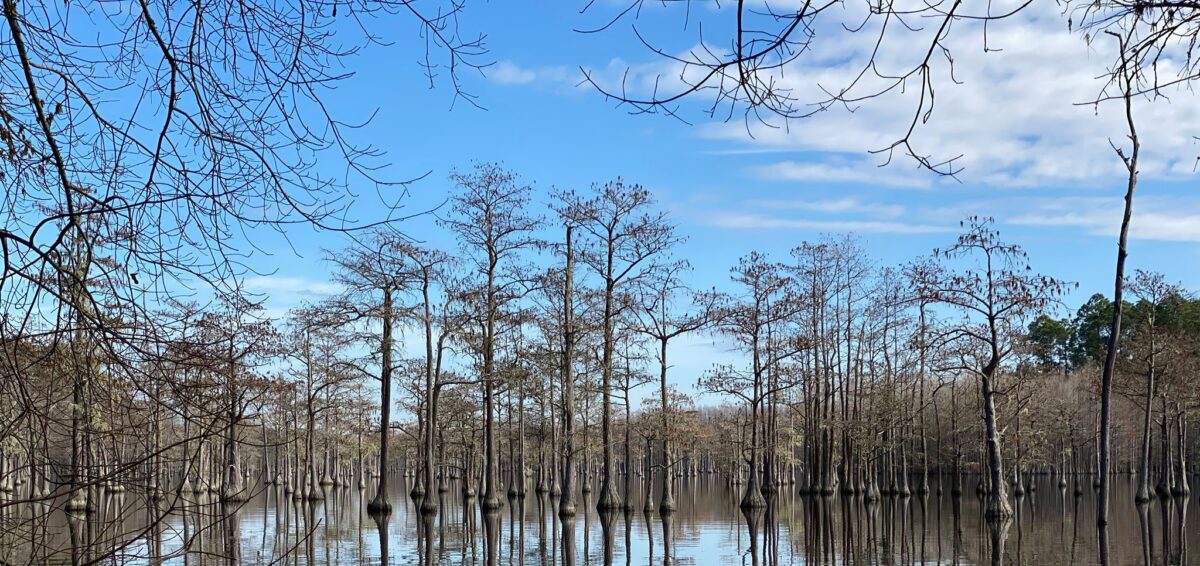The Charlotte Observer reports that Duke Energy notified the North Carolina Department of Environment and Natural Resources on Sunday afternoon that one of their coal ash ponds at the Dan River Power Station was spilling coal ash waste and toxin contaminated water into the Dan River. The company’s early estimate was that 82,000 TONS of toxic coal ash waste and up to 27 MILLION gallons of water had poured into the river supplying municipal drinking water systems downstream.

Duke Energy officials waited until 4:03 on Monday afternoon to inform the public.
The Observer quotes power company officials saying on Tuesday that it was “definitely unexpected” that a reinforced concrete pipe would break.
Except Duke Energy didn’t use concrete pipes for two thirds of the length of the pipe where the leak continues to spill into the Dan River. The company thought it had used concrete pipes in the 1960s when they built the coal ash ponds, but now they know that only one-third of the length of the pipe work is concrete.
Ooops.

Late yesterday Appalachian Voices reported that coal ash has reached the intake point at the Danville water works. Virginia Beach authorities have turned off the pumps at Lake Gaston until the full impact of the spill is determined.
The water problems aren’t over for West Virginians either. The News Observer reports that Dr. Rahul Gupta, health officer for Kanawha and Putnam counties urges parents with children ages three and younger, as well as people with weakened immune systems, to avoid drinking the water. Yesterday two schools had to close when students and teachers were overwhelmed with the licorice fumes associated with the coal processing chemical that contaminated water resources last month.
There are plenty of potential coal ash spills waiting to happen. Today’s Washington Post notes that there are 207 plant sites in 37 states where coal ash contamination has violated federal air and water health standards. Georgia could be next.
Georgia is riddled with coal plants and the toxic waste they produce. Even as Georgia Power begins to shutter coal units, the coal ash remains. Middle Georgia’s Plant Branch and Plant Scherer as ranked as Significant for hazards. After the doors are locked at Plant Branch next April, the tons of coal ash and toxic-soaked water will still be there in retention ponds, right there on the banks of Lake Sinclair that feeds the Oconee River.
How can this be? Easy.
IN HARM’S WAY: Lack of Federal Coal Ash Regulations Endangers Americans and Their Environment, a report by the Environmental Integrity Project includes this on coal ash waste regulations and monitoring, “Mississippi, Alabama, and Georgia either require no monitoring of their numerous ash ponds or monitoring only after the ponds have been closed, a rare event as most ponds are operated perpetually as ‘storage’ sites. Monitoring data from state files in Georgia were so minimal that no assessment of impacts could be made.”
Power companies in Georgia are allowed to self-monitor their coal waste storage sites. Not the state agency that issued their permits, not river keepers, not municipal agencies. The power companies get to make the waste and monitor the safety of its storage.
We’ve allowed corporations, lobbyists, and legislators to put us at risk for decades and we can’t afford any longer to think “it won’t happen to us”. The “us” is everyone in the Charleston, West Virginia, Danville, and now Virginia Beach.
And the time to speak up is now.

Excellent post. Lots of local coverage in Greensboro, including front-page coverage today of grey water going over the dam in Danville. Interesting to follow the path of the Dan as it meanders through NC and VA.
Fascinating political issues coming out concerning NC Gov McCroury and Duke Energy. ABC report at: http://abcnews.go.com/US/wireStory/duke-energy-issues-apology-nc-coal-ash-spill-22426667